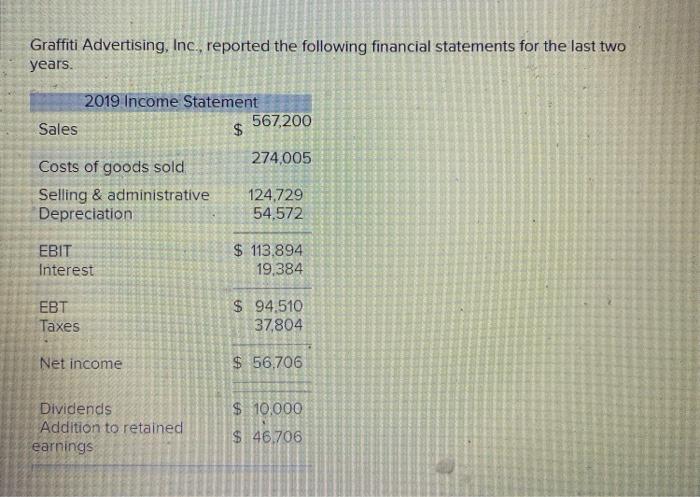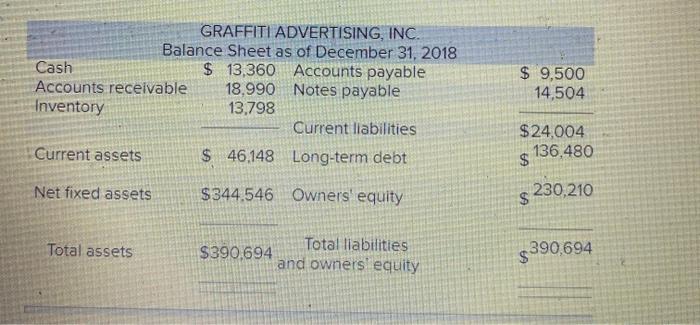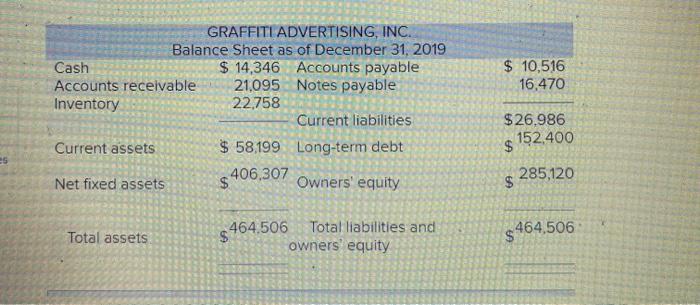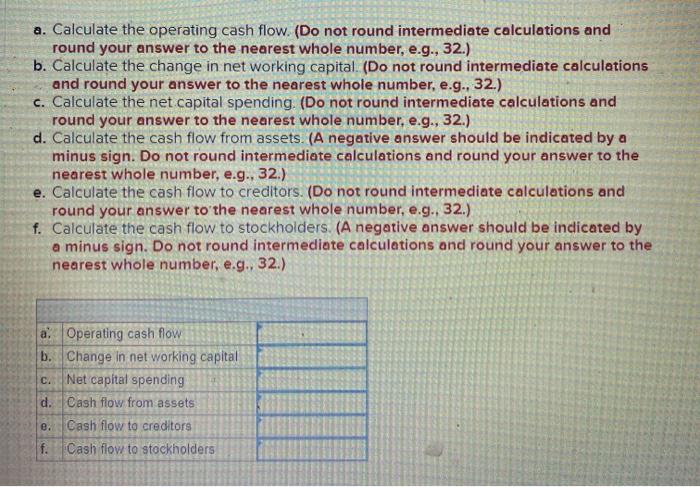Graffiti Advertising, Inc., reported the following financial statements for the last two years. 2019 Income Statement 567,200 Sales $ 274,005 Costs of goods sold Selling & administrative 124,729 Depreciation 54,572 EBIT Interest $ 113.894 19,384 EBT Taxes $ 94.510 37,804 Net income $ 56,706 Dividends Addition to retained earnings $ 10.000 $ 46.706 GRAFFITI ADVERTISING, INC. Balance Sheet as of December 31, 2018 Cash $ 13,360 Accounts payable Accounts receivable 18,990 Notes payable Inventory 13,798 Current liabilities Current assets $ 46,148 Long-term debt $ 9,500 14,504 $24,004 136,480 $ Net fixed assets $344.546 Owners' equity $ 230,210 Total assets Total liabilities $390,694 and owners' equity 390,694 $ 10,516 16,470 GRAFFITI ADVERTISING, INC. Balance Sheet as of December 31, 2019 Cash $ 14,346 Accounts payable Accounts receivable 21.095 Notes payable Inventory 22.758 Current liabilities Current assets $ 58,199 Long-term debt Net fixed assets $ 406,307 Owners' equity $26.986 152,400 $ es 285,120 $ Total assets Total liabilities and $ $464.506 owners' equity $464,506 a. Calculate the operating cash flow. (Do not round intermediate calculations and round your answer to the nearest whole number, e.g., 32.) b. Calculate the change in net working capital. (Do not round intermediate calculations and round your answer to the nearest whole number, e.g., 32.) c. Calculate the net capital spending. (Do not round intermediate calculations and round your answer to the nearest whole number, e.g., 32.) d. Calculate the cash flow from assets. (A negative answer should be indicated by a minus sign. Do not round intermediate calculations and round your answer to the nearest whole number, e.g., 32.) e. Calculate the cash flow to creditors. (Do not round intermediate calculations and round your answer to the nearest whole number, e.g., 32.) f. Calculate the cash flow to stockholders. (A negative answer should be indicated by a minus sign. Do not round intermediate calculations and round your answer to the nearest whole number, e.g., 32.) a: Operating cash flow b. Change in net working capital c. Net capital spending d. Cash flow from assets e. Cash flow to creditors f. Cash flow to stockholders










